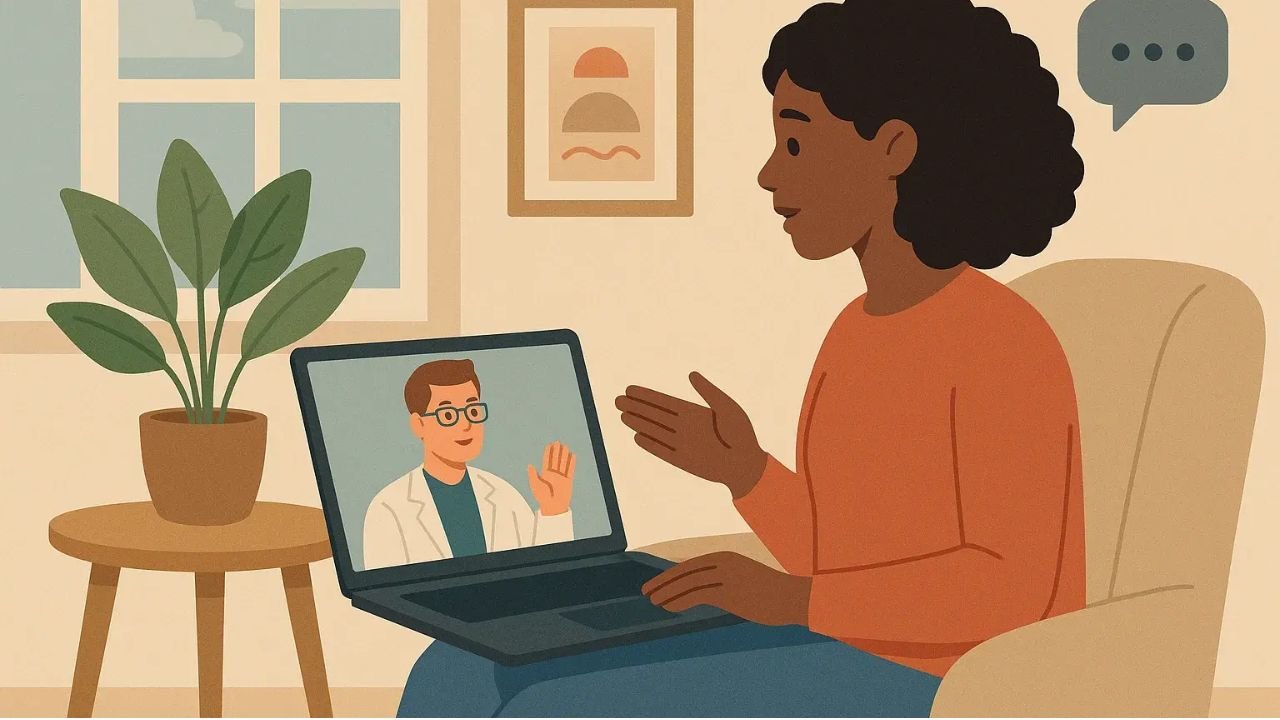The way people access mental health support has changed significantly in recent years. Online therapy is no longer seen as a novelty—it has become a practical solution for many who need support but face obstacles to getting it in person. Whether it’s due to distance, cost, or a busy schedule, a growing number of people are turning to online psychotherapy as a convenient and effective alternative to traditional face-to-face sessions.
Changing How People Get Help
One of the biggest challenges in mental health care has always been access. In rural areas, for example, people might have to drive for hours to reach the nearest therapist. Even in cities, finding an available practitioner who takes your insurance, fits your schedule, and feels like the right match can be frustrating.
This is where psychotherapy online steps in to fill the gap. Sessions are usually done through secure video calls, which removes the need to travel. For someone working long hours or juggling childcare responsibilities, being able to meet with a therapist from home—or even during a lunch break—makes all the difference. It opens the door for people who might otherwise give up on seeking help altogether.
More Than Just Convenience
At first glance, the main appeal of virtual therapy might seem to be convenience. But there’s more to it than that. Some clients feel more comfortable opening up in their own space. The familiar setting can help reduce the anxiety that sometimes comes with talking to a stranger about personal struggles. For people dealing with social anxiety or those who’ve had negative experiences in clinical environments, this can be especially helpful.
There’s also a greater sense of privacy. Some people avoid traditional therapy because they don’t want to risk being seen walking into a clinic. Online sessions remove that concern, giving individuals the confidence to seek help without worrying about judgment or exposure.
Online Psychotherapy Services Are Expanding
Technology has made it easier than ever for therapists and clients to connect. Online psychotherapy services now offer a wide range of options to meet different needs. Whether it’s weekly one-on-one sessions, group therapy, or even text-based support, people can find something that works for them. Some platforms specialize in specific issues like anxiety, depression, or trauma, while others offer general support.
Many services also provide tools beyond the sessions themselves. For example, clients may be able to track their mood, complete guided exercises, or message their therapist between appointments. These added features can help people feel supported even outside of scheduled time.
Affordability and Flexibility
Cost is often a barrier to mental health care. In-person therapy can be expensive, especially if insurance doesn’t cover it. Some online platforms offer more affordable rates, and many accept insurance. Even when paying out of pocket, the lower overhead of running a virtual practice can lead to savings that are passed on to the client.
Flexibility is another major benefit. With more therapists offering sessions outside of typical office hours, clients don’t have to take time off work or rearrange their schedules. This kind of accessibility helps make therapy more realistic and sustainable for people juggling multiple responsibilities.
Reaching Underserved Communities
Not everyone has had equal access to mental health care. Cultural, financial, and geographic barriers have long made it difficult for many to get the support they need. Online therapy is helping to change that.
For people in underserved communities, especially those without many local resources, access to therapists who understand their background and lived experience can be life-changing. The ability to search beyond their immediate area allows clients to find someone they truly connect with, which can lead to better outcomes.
Online options also make it easier to find therapists who speak different languages or specialize in certain cultural issues. For marginalized groups, this can be an essential part of feeling seen and heard in the therapeutic space.
Ensuring Quality and Safety
Some people worry that therapy done online won’t be as effective or secure. While these concerns are understandable, research has shown that virtual sessions can be just as successful as in-person ones. What matters most is the relationship between the therapist and the client, not the format of the conversation.
To maintain high standards, licensed professionals who offer online psychotherapy are held to the same ethical and legal guidelines as those working in offices. Reputable platforms also use encrypted video and messaging tools to protect privacy.
That said, it’s still worth doing a little homework before signing up. Checking a therapist’s credentials and making sure they’re licensed in your state helps ensure you’re working with someone qualified and trustworthy.
Challenges That Still Exist
Even with all its benefits, online therapy isn’t perfect. A stable internet connection is necessary, and not everyone has access to a private space where they feel safe talking. Some types of therapy, especially those that rely heavily on body language or physical presence, may not translate as well to a virtual format.
There are also cases where in-person care is more appropriate, such as when someone is in crisis or dealing with severe mental health conditions that require close supervision. In those situations, traditional services or inpatient care might be necessary.
Still, for a large and growing number of people, online options offer meaningful support that they might not otherwise be able to receive.
Looking Ahead
The rise of online therapy isn’t just a temporary shift—it reflects a deeper change in how people think about mental health. More and more, it’s becoming accepted that care can and should be adapted to fit people’s lives, not the other way around.
As technology continues to improve and more therapists gain experience working online, the services will only get better. Mental health care that once felt out of reach for many is now a few clicks away.



